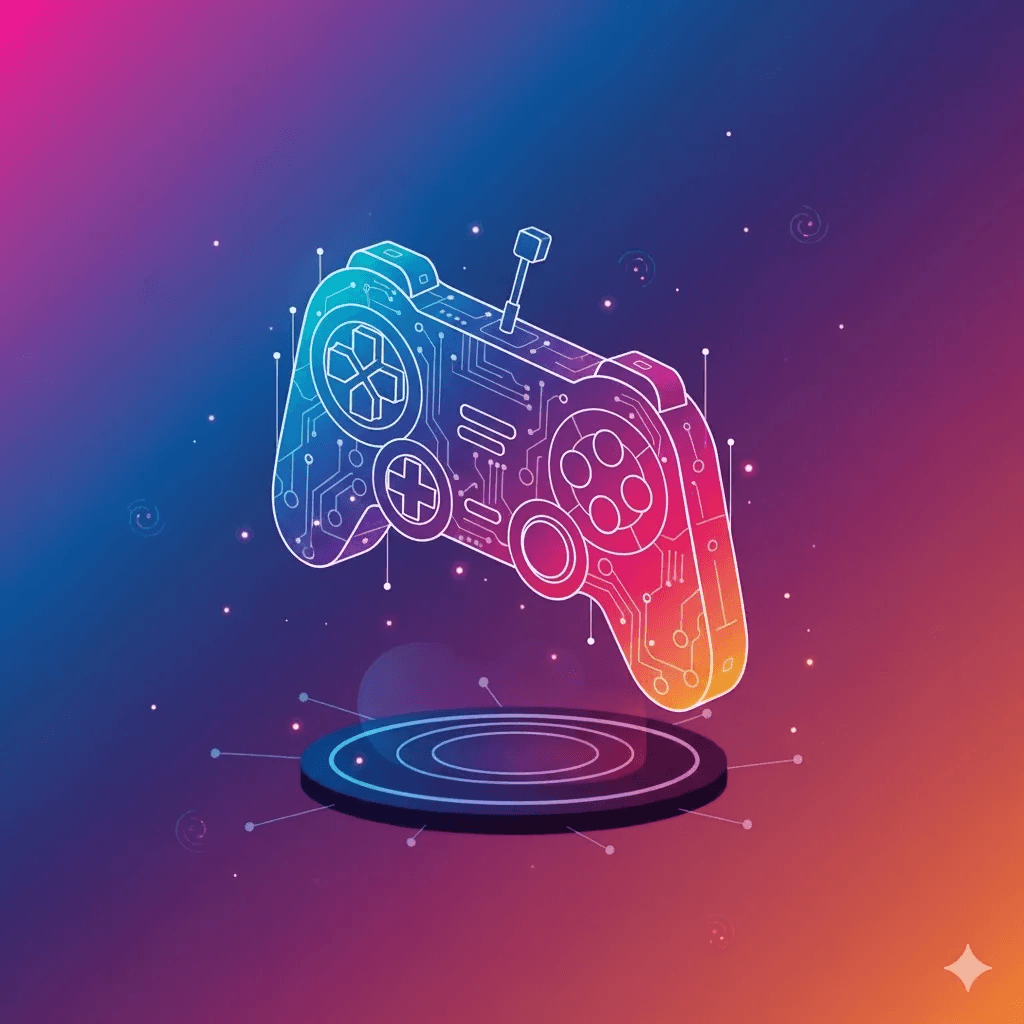
#AI in the Gaming Industry. Transforming Development and the Creative Process
Introduction: Artificial Intelligence as a Key Game Development Tool
The gaming industry, known for its high demands on innovation and content detail, is undergoing a revolution driven by Artificial Intelligence (AI) and Generative AI (Gen-AI). AI has ceased to be just a part of the gameplay (NPC behavior) and has become a critical tool for developers themselves. The implementation of these technologies allows studios not only to speed up production but also to significantly reduce operating costs and improve the quality and uniqueness of game content.
This article, based on analytical data, reveals how AI algorithms are helping developers, transforming every stage of modern video game creation.
Automation of Creative Production (Content)
AI makes its most significant contribution to the content creation process, which is the most labor-intensive and expensive stage of development. 56 k
Asset Generation and Prototyping
Creating detailed 3D models, textures, environment objects, and sound effects traditionally required hundreds of hours of work from artists and designers. Gen-AI changes this process:
- Textures and Materials: AI algorithms can create seamless, high-quality textures and normal maps (for surface detail) based on simple text descriptions or low-quality images. An artist can generate dozens of variations of forest floor or rusty metal in minutes instead of hours.
- 3D Modeling: AI assists in the creation of basic "dummy" or prototype 3D models (e.g., trees, rocks, furniture elements). Instead of creating from scratch, the designer adjusts the generated template, significantly reducing modeling time.
- Rapid Location Prototyping: Using Generative Adversarial Networks (GANs), developers can create diverse, logically coherent level and landscape layouts to test game mechanics before final details are created.
Voiceover and Localization
Gen-AI is making a breakthrough in voiceover, reducing reliance on studio recording.
- TTS: Modern AI models can generate high-quality, emotionally charged speech for non-player characters (NPCs) with minimal overhead. This is especially critical for dialogue-heavy games and for rapid localization into multiple languages.
- Voice Assets: AI can generate unique sound assets—from footsteps on different surfaces to ambient city noises—ensuring a diverse and realistic game audioscape.
Gameplay and Behavior Improvements (Gameplay)
AI algorithms are used to create a smarter, more realistic, and dynamic gaming experience that surpasses traditional scripting.
Dynamic Difficulty and Balance
- Adaptive Difficulty: AI analyzes a specific user's playstyle (reaction speed, accuracy, strategies used) and dynamically adjusts enemy difficulty, attack frequency, and resource levels. This ensures optimal flow and keeps the player engaged, preventing boredom and frustration.
- Balance Testing: During development, AI agents can play early versions of the game thousands of times, using different strategies. This allows for automatic identification of balance holes (weapons that are too strong, exploits) much faster than manual testing.
NPC Behavior and Interactivity
- Behavior Trees: Instead of rigid, scripted scenarios, AI uses advanced algorithms to create more complex and unpredictable NPC behavior patterns. For example, NPCs can remember player actions, collaborate with each other, or plan ambushes based on real-time data.
- Dialogue Generation: Gen-AI can not only play recorded phrases but also generate unique, contextually appropriate NPC responses to the player's actions or questions, creating the illusion of a living, non-linear world.
Workflow Optimization (Efficiency)
AI is integrated into the development engine, reducing the time engineers spend on routine and technical tasks.
Testing and Debugging Acceleration (QA)
- Automated Testing: AI bots can independently explore game levels, perform millions of repetitive actions, and search for bugs that are difficult for humans to detect (for example, memory errors or freezes under rare conditions).
- Bug Prioritization: Machine learning algorithms analyze error logs and automatically prioritize them based on their potential impact on game stability or player experience, allowing developers to focus on the most critical ones.
Project Management and Analytics
- Predictive Planning: AI tools analyze historical development data (task completion speed, bug fix time) and predict completion dates for current projects.